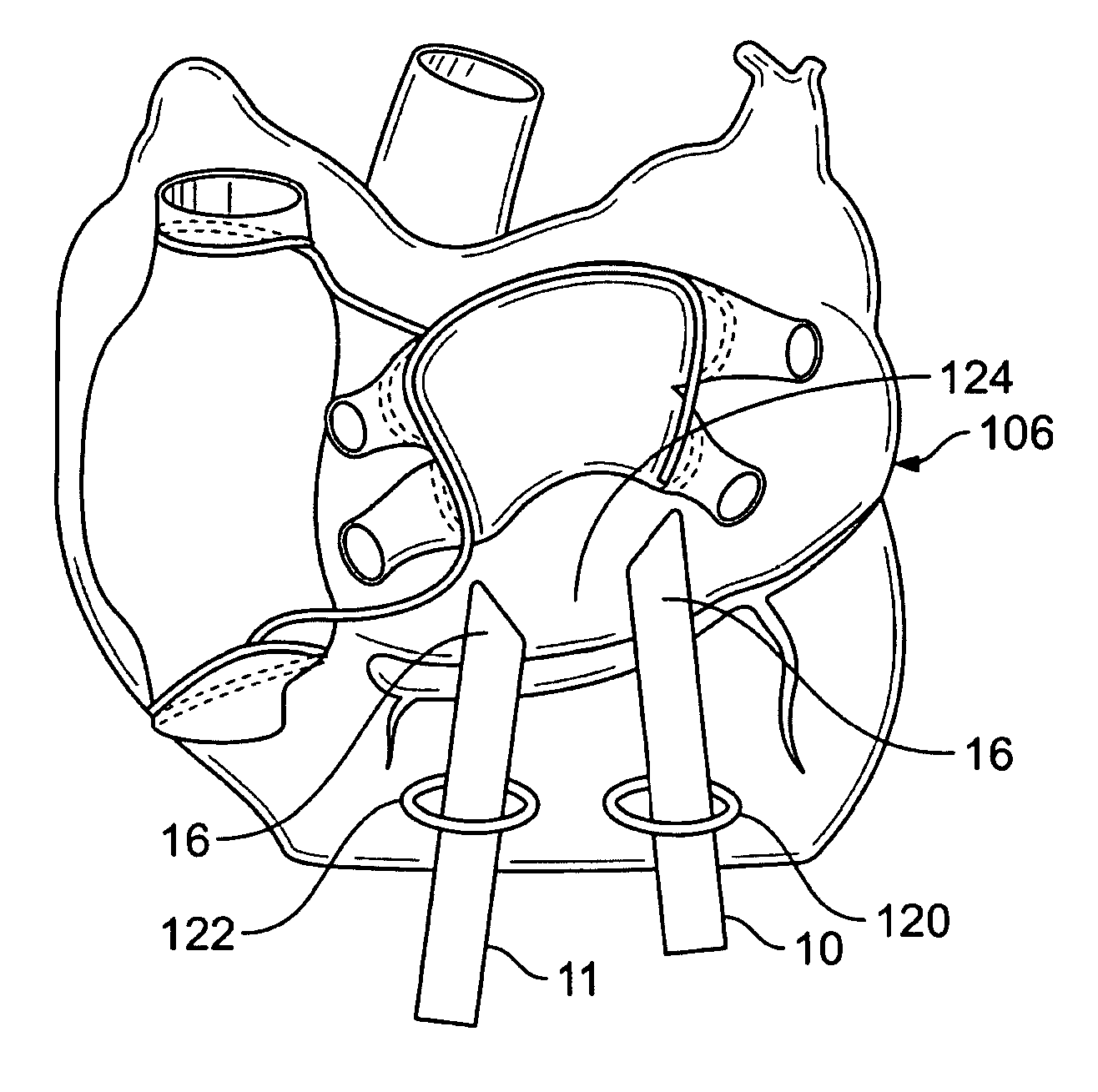Dissecting cannula and methods of use thereof
a technology of dissection cannula and cannula, which is applied in the direction of surgical staples, catheters, osteosynthesis devices, etc., can solve the problems of reducing the number of devices that a physician must manipulate in the surgical area, reducing the amount of tissue dissection that a physician typically has less control over, and the device is still not optimal
- Summary
- Abstract
- Description
- Claims
- Application Information
AI Technical Summary
Benefits of technology
Problems solved by technology
Method used
Image
Examples
Embodiment Construction
[0038]Methods and devices described herein provide for improved manipulation of organs and / or instruments within the body by creating working spaces within the body and adjacent to a target site. While the following disclosure discusses devices and methods for use in the thoracic cavity, such methods and devices can be applied to various body portions outside of the thoracic cavity. The methods and devices may allow for direct visualization along regions of anatomic structures not attainable with conventional approaches.
[0039]Furthermore, the methods and devices described herein may be used in conjunction with, or as an alternative to the conventional approaches described herein. For example, while some surgical approaches and procedures described herein rely on entry through the diaphragm of a patient to access a regions of the thoracic cavity, the surgical approaches and procedures can be combined with various other access methods.
[0040]FIG. 1 shows one example of a tissue dissect...
PUM
 Login to View More
Login to View More Abstract
Description
Claims
Application Information
 Login to View More
Login to View More - R&D
- Intellectual Property
- Life Sciences
- Materials
- Tech Scout
- Unparalleled Data Quality
- Higher Quality Content
- 60% Fewer Hallucinations
Browse by: Latest US Patents, China's latest patents, Technical Efficacy Thesaurus, Application Domain, Technology Topic, Popular Technical Reports.
© 2025 PatSnap. All rights reserved.Legal|Privacy policy|Modern Slavery Act Transparency Statement|Sitemap|About US| Contact US: help@patsnap.com



